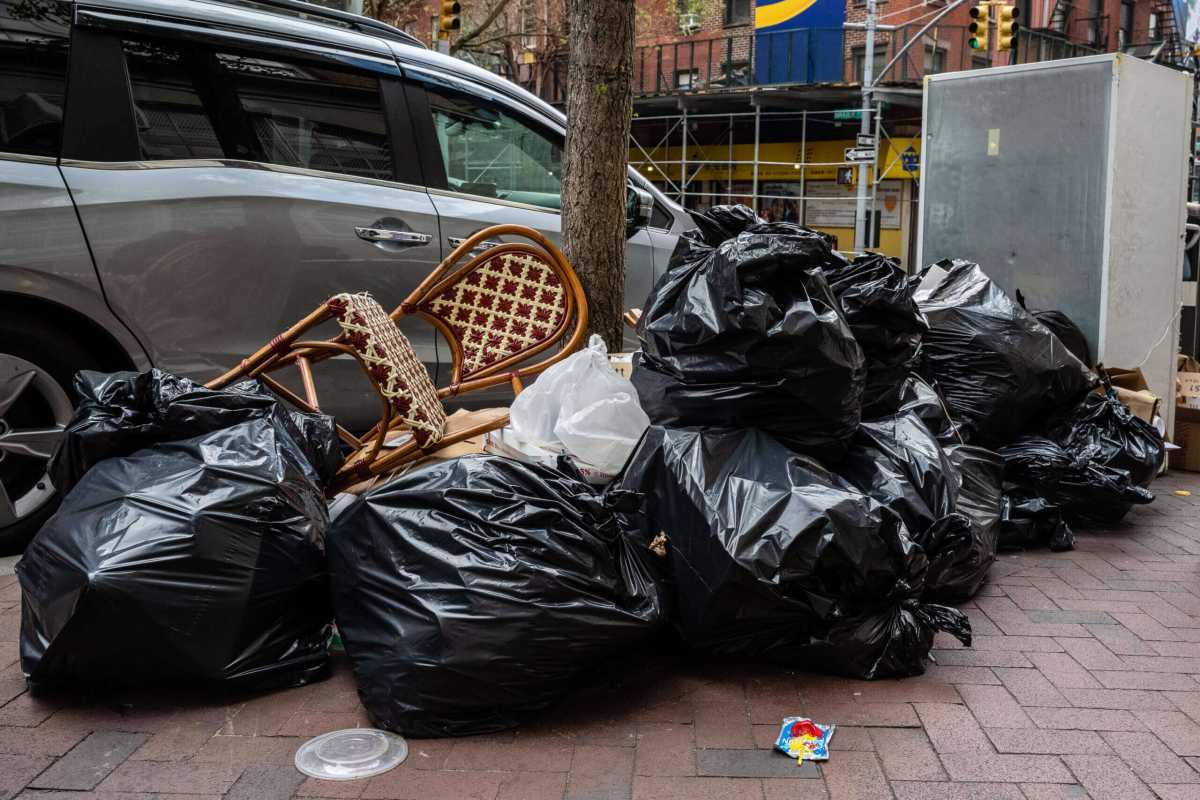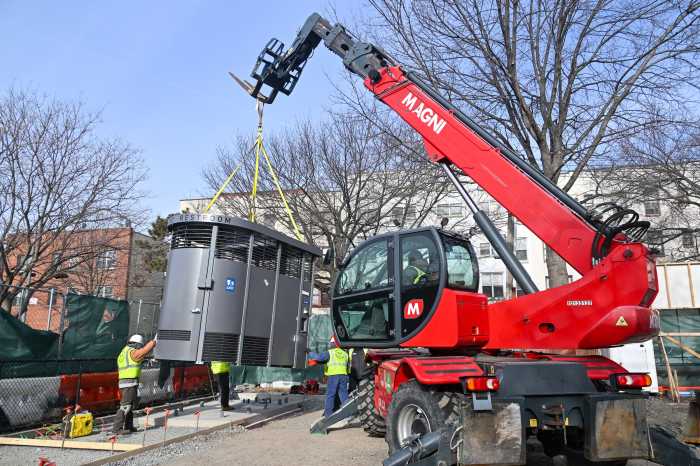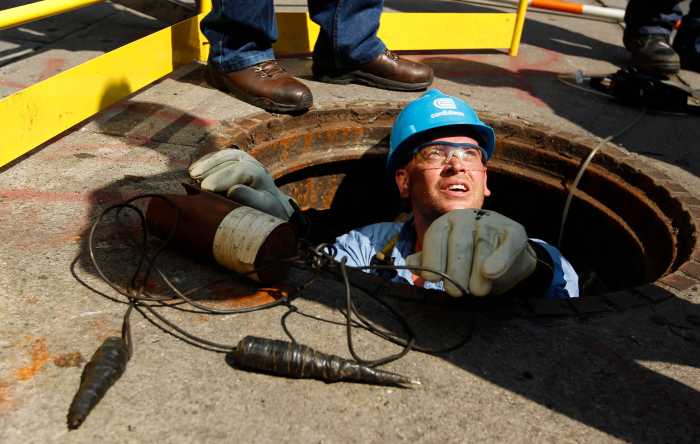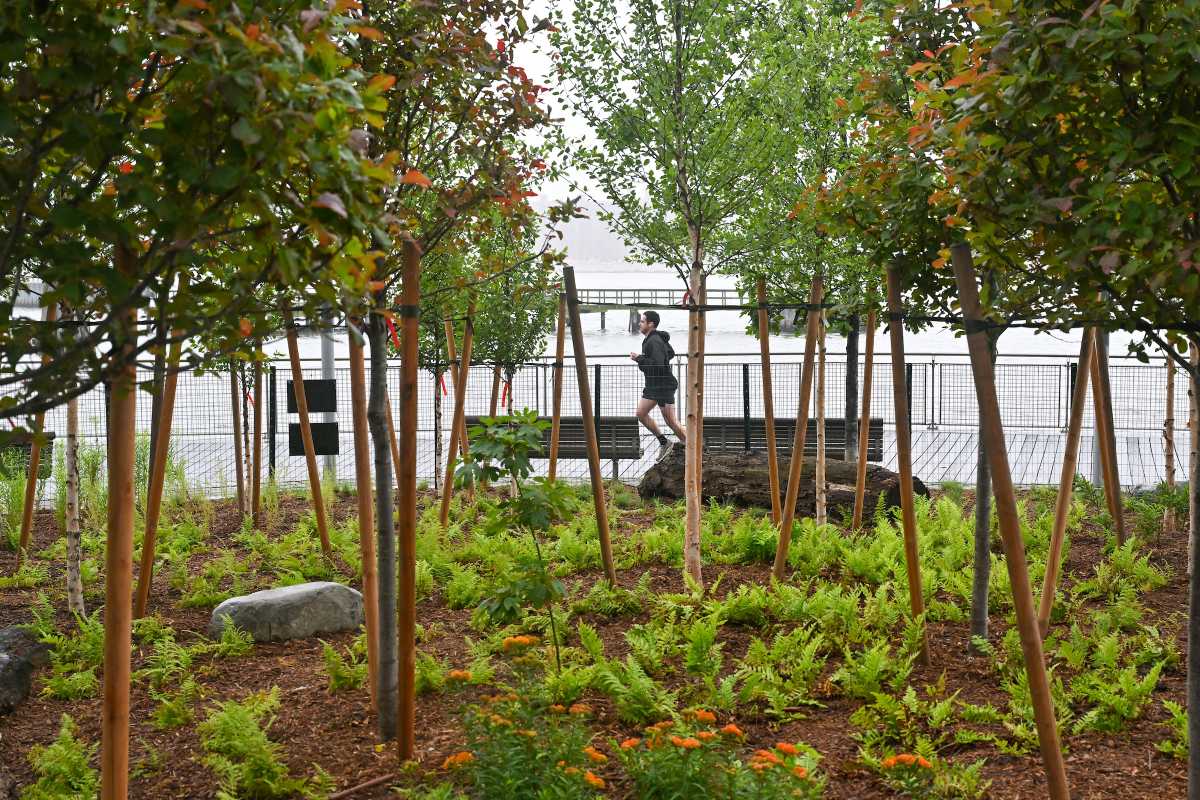The Department of Sanitation is set to launch a pilot of containerized waste collection in Harlem this fall, with an eye towards possibly ridding New York’s streets of the mountains of trash bags set out each week.
The pilot in West Harlem’s Community Board 9 will repurpose a few parking spots on 10 residential blocks with shared, wheeled waste containers, about three square yards each, for trash, recycling, and organics produced by the block.
The waste will be collected by sanitation trucks retrofitted with mechanized “tippers” to lift and dump the loads, rather than workers lifting and tossing the bags themselves, and collection will increase from three to six times per week. Containers will also be placed outside up to 14 schools in the neighborhood.
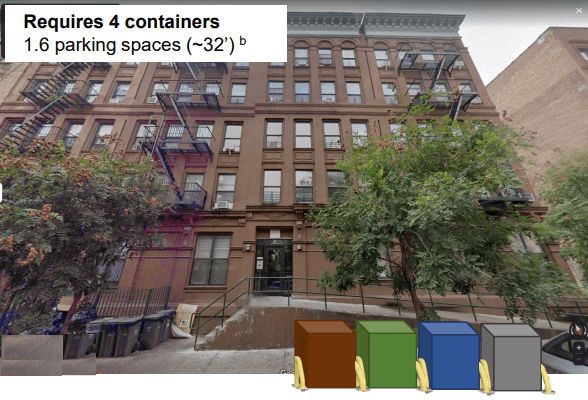
Should the pilot — first reported by Streetsblog and the New York Times — prove successful, it could pave the way for a major transformation in how New York disposes of its 24 million pounds of residential garbage produced each day. Cities around the world for decades have collected trash in curbside containers — mini-dumpsters, in a sense — while the Big Apple has continued to have residents toss their waste on the curb in plastic bags, a veritable feast for the city’s 2 million rats.
But after years of hemming and hawing, on Wednesday DSNY released a 96-page report called “The Future of Trash,” developed with consulting giant McKinsey, where Sanitation Commissioner Jessica Tisch said in no uncertain terms that containerization is viable in the vast majority of the city. The report noted that the program could be implemented on about 89% of the city’s residential streets, which account for 77% of the household waste.
“In short, waste containerization is feasible in many parts of New York City,” Tisch wrote in a foreword to the report. “Like many good things, it will not come easily, but there is no doubt that it can be done.”

The implementation of the plan is not straight forward.
DSNY says in the report that wheeled containers are not a “reliable, scalable solution for New York City” as they can be stolen and are prone to break down. The department is partial to stationary containers and plans to develop a “first-of-its-kind stationary shared container” in the near future.
Another issue is that the city’s fleet of 2,000 garbage trucks were not built for mechanized collection, and the city would have to purchase thousands of new trucks capable of automatically hauling loads from the side of the truck into the rear compactor.
The city would also have to increase the frequency of collection to prevent overflowing containers, in some cases by double. And still, 11% of the city’s streets, many of them among the city’s densest, are considered nonviable for containerization. New York’s lower-density areas, about 50% of the city’s residential land, could make do with individual bins set out on the street, the department notes.
But perhaps the most pressing, and politically herculean, snag is the implications of such a massive repurposing of the city’s curbs. Storing trash in containers right by the sidewalk is already being ruled out in places due to the complex network of utility lines directly below the roadbed. Other challenges include the presence of fire hydrants, bus stops, bus and bike lanes, and outdoor dining sheds.
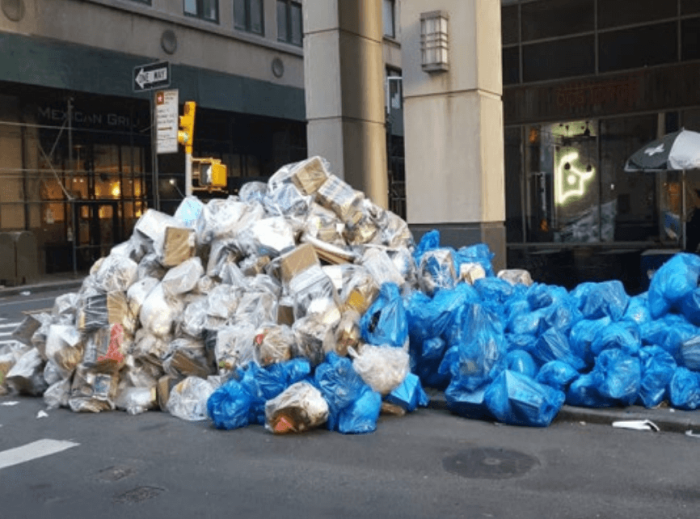
And of course, there’s parking. DSNY says that citywide containerization would require repurposing up to 10% of the city’s parking spots, about 150,000 total, and on some blocks, containers would have to occupy up to 25% of the curb space. Both of those would almost certainly engender political backlash from the city’s drivers, some of whom have sued the city for repurposing far fewer spots for outdoor dining, bike lanes, and open streets.
There is no one-size-fits-all solution to the city’s long-festering garbage problem, and DSNY notes that other cities looked to as models utilize many different methods to collect their trash and have advantages New York doesn’t have. Chicago, for instance, has nearly 2,000 miles of alleyways snaking through the city that are perfect for the placement of containers—while New York is famously bereft of alleyways. Barcelona, which DSNY notes has “high resident satisfaction” with its system, utilizes both shared containers and individual bins, and also stores waste underground.
Read more: NYC Urges Residents to Squash Lanternflies



